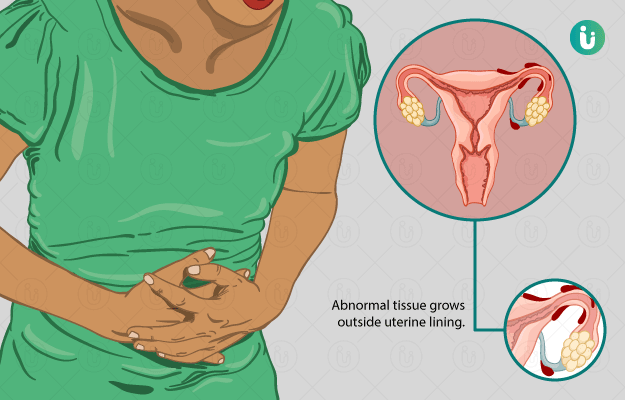What is Endometriosis?
The endometrium, the innermost lining of the uterus, is shred through bleeding during menstruation. The lining is sensitive to ovarian hormones oestrogen and progesterone. Endometriosis occurs when the endometrial tissue starts growing in the fallopian tubes, ovaries, or some distant organs, other than the uterus. It is a significantly painful condition and can occasionally be serious enough to cause adhesions of the pelvic organs to each other.
What are the main signs and symptoms?
The symptoms of endometriosis are somewhat dependent on the area in which the endometrial tissue grows. Certain common symptoms of endometriosis include
- Severe pain in the abdomen or pelvic area during menses (dysmenorrhea)
- Dyspareunia (pain during intercourse)
- Abnormally profuse (menorrhagia) or prolonged (metrorrhagia) bleeding during menstruation
- Infertility
- Painful urination and defecation
- Fatigue (especially during menstruation)
What are the main causes?
When the endometrial tissue accidentally gets lodged in the ovaries, fallopian tubes, or other pelvic organs, it can result in the endometriosis. This can happen due to several reasons:
- Retrograde Menstruation – When the menstrual blood flows back into the fallopian tubes or ovaries (reverse direction), the endometrial cells can get implanted in the fallopian tubes or ovaries
- Surgical Implantation – During caesarean deliveries or hysteroscopy, the endometrial tissue can get implanted in the pelvic organs
- Peritoneal Cell Transformation – Due to certain immune complexes or hormones, peritoneal cells get transformed into endometrial tissue
- Endometrial Cell Transportation – Endometrial cells can get lodged into other organs via the blood or lymph
- Embryonic Cell Transformation – During puberty, due to oestrogen, embryonic cells can get transformed into the endometrial cells.
How is it diagnosed and treated?
A proper clinical history along with a thorough physical examination (including pelvic examination) usually helps in diagnosing endometriosis. Nevertheless, certain investigations are performed to confirm the diagnosis and check the extent of the spread:
- Ultrasound of the Pelvis – Reveals the endometrial tissue lodged into other pelvic organs
- Transvaginal Ultrasound – Relatively more accurate in checking for endometrial tissue in the pelvic organs
- Laparoscopy – Endoscopic visualisation of the endometrial tissue along with a biopsy helps to confirm the diagnosis
- Magnetic Resonance Imaging (MRI) – Helps in localising as well as checking the size of the endometrial implant
Treatment modalities for endometriosis include:
- Oral Medication – Painkillers to ease the dysmenorrhea
- Hormone Therapy – To reduce pain, regularise menses, reduce the flow
- Surgery (Conservative Therapy) – Surgical removal of the implanted or transformed endometrial tissue. In extreme cases, the uterus along with the fallopian tubes and ovaries is removed (hysterectomy)

 Doctors for Endometriosis
Doctors for Endometriosis  OTC Medicines for Endometriosis
OTC Medicines for Endometriosis



















